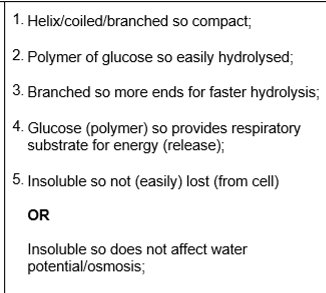4.1 DNA, Genes and Chromosomes
1/22
There's no tags or description
Looks like no tags are added yet.
Name | Mastery | Learn | Test | Matching | Spaced |
|---|
No study sessions yet.
23 Terms
Describe a gene code for the production of a polypeptide:
Base/ nucleotide sequence in triplets determines the order/ sequence of amino acid sequence/ primary structure.
Exon:
- Nucleotide sequence coding for polypeptide sequence of amino acids
Describe how a phosphodiester bond is formed between two nucleotides within a DNA molecule
- Condensation reaction loss of water
- Between phosphate and deoxyribose
Catalysed by DNA polymerase
Difference between DNA in plants vs prokaryote
- Histones vs no histones
- Linear vs circular
- No plasmids vs plasmids
- Introns v no introns
- Longer vs shorter
What is an intron?
• DNA that does not code for a protein
• Positioned between genes
Why may a mutation in a nucleotide sequence of a gene cause a change in te structure of a polypeptide
- Triplets code for the same amino acid
- May occur in introns
Compare and contrast DNA in eukaryotic cells to prokaryotic cells:
- DNA in eukaryotic cells is associated with histones
- DNA in eukaryotic cells is linear whereas in prokaryotic cells is circular
- Prokaryotic cells do not have introns in DNA
- Both have nucleotides which are identical
- Nucleotides joined by phosphodiester bonds
- Prokaryotic cells have shorter DNA
Describe how one amino acid is added to a polypeptide that is being formed at a ribosome during translation:
- tRNA is used to bring specific amino acids to the ribosome
- Anticodon binds to the codon on Mrna
- Amino acids join by condensation reaction using ATP
Describe how mRNA is formed from an exposed template
Nucleotides form complementary base pairs
Phosphodiester bonds form
By action of RNA polymerase
Describe how mRNA is formed by transcription in eukaryotes:
- Hydrogen bonds between DNA bases break
- Only one DNA strand acts as a template
- Free RNA nucleotides align by complementary base pairing
- In RNA uracil base pairs with adenine
- RNA polymerase joins adjacent RNA nucleotides
- By phosphodiester bonds between adjacent nucleotides.
Describe how a polypeptide is formed via translation
- Mrna attaches to ribosomes
- Trna anticodons bind to complimentary Mrna codons
- Trna brings a specific amino acid
- Amino acids join by peptide bonds
- Amino acids join together with the use of ATP
- TRNA released after amino acid joined to polypeptide
- The ribosome moves along the MRNA to form the polypeptide
What is the proteome?
Full number of different proteins that a cell is able to produce
Differences between MRNA and TRNA:
- MRNA does not have hydrogen bonds
- MRNA is linear (straight chain)
- MRNA does not have an amino acid binding site, TRNA does
- MRNA has more nucleotides
- MRNAs have different lengths, all TRNAs are similar
- MRNA has codons, TRNA has an anticodon
What is ribosomes made of:
- RNA
- Proteins
Describe the role of a ribosome in the production of a polypeptide
- Mrna binds to ribosome
- Two codon binding sites
- Allows TRNA with anticodons to bind
- Catalyses formation of peptide bond between amino acids
- Moves along MRNA to next codon/ translocation
Gene mutation
- Change in the base nucleotide base sequence
- Results in the formation of new allele
- Genetic code is degenerate so amino acid sequence may not change
- Does change amino acid but no effect on tertiary structure
- New allele is recessive so does not influence phenotype
- Results in change in polypeptide that positively changes the properties
- May result in increased survival chances
How does crossing over work:
- Homologous pairs of chromosomes form a bivalent
- Chiasmata form
- Equal lengths of non-sister chromatids/ alleles are exchanged
- Producing new combinations of alleles
Why do all cells in the body have this mutation?
- Mutation in gamete
- All cells in the body are derived from mitosis on the zygote
What is it called when an organism is identified by its species name and the genus name
Binomial
Type of mutation where an extra chromosome arises
Non disjunction
Chromosomes not separated in meiosis
All chromosomes stay in the cell
How does random fertilisation give rise to genetic variation?
Random fusion of gametes
Produces new allele combinations



